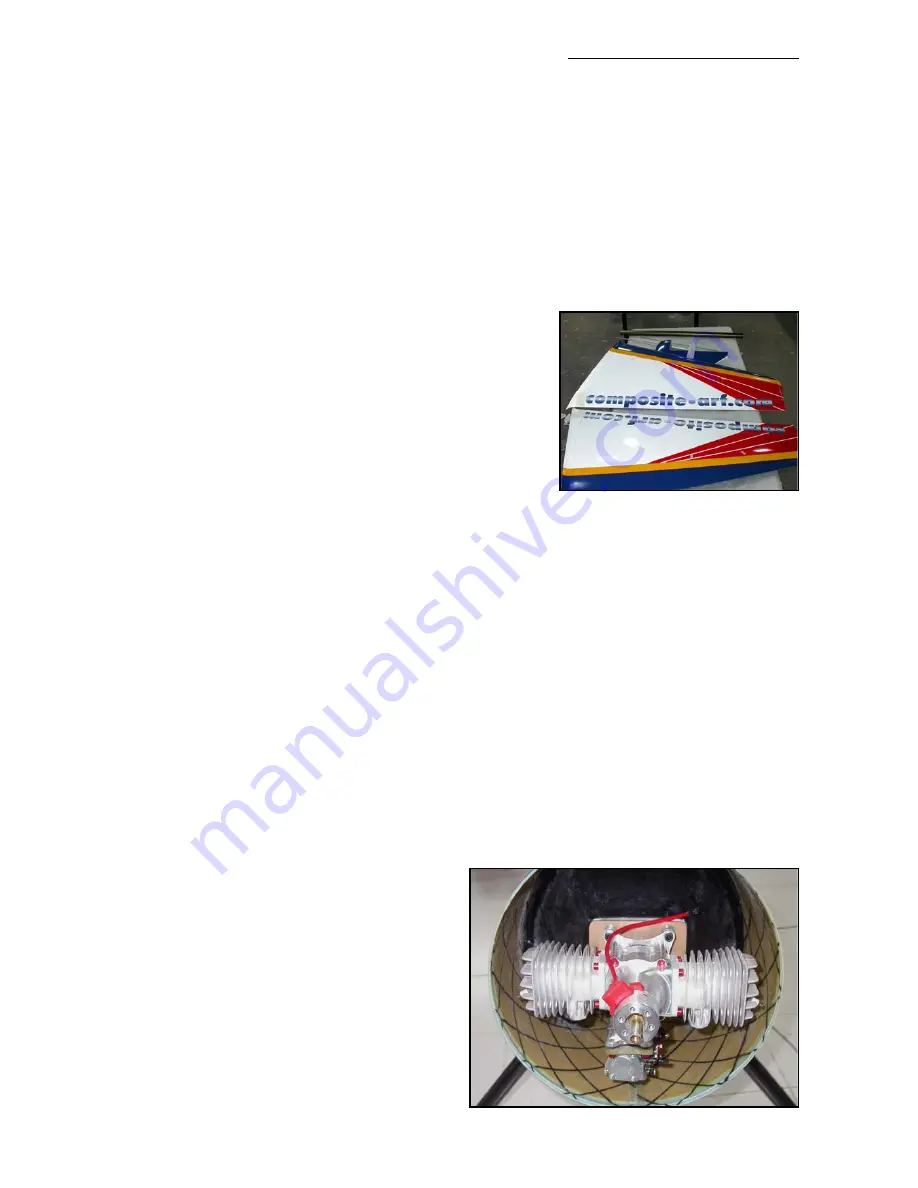
than this. Make sure that the control horns are glued into the ailerons properly. The hole in the
phenolic horn for the quick-link needs to be exactly perpendicular to the hinge axis line, and in
this manual we show you a simple way to ensure that the horns in all pairs of control surfaces
will be identical, making it easy to set up your R/C for accurate flying manoeuvres.
The wings are already set-up with servo covers and hatches for 2 servos per aileron, and we rec-
ommend a pair of high-torque servos, like the JR D8411, in each wing. Our servo covers and
milled plywood mounts make both installation, and exchange if necessary, very quick and easy
and provide a rock solid servo mounting and linkage system.
The wings are attached to the fuselage with the 4 threaded
aluminium dowel anti-rotation pins, with 4 plastic nuts
inside the fuselage. If the aluminium dowels come loose in
the wing, the wing will slide outwards, away from the fuse-
lage, and the main spar will definitely break. So take great
care to inspect the glue joints of these anti-rotation dowels
in the wing REGULARLY. Excessive vibrations or hard
shocks can cause the glue joints to weaken or break.
Monitor these joints whenever you set up your plane. Never
forget to tighten the nuts inside the fuselage. Your flight will
end after 100 ft and you will have to fix a hole in your club’s
runway. Please DO NOT modify these attachment dowels in
any way, their perfect function is proven for many years.
The Fuselage:
The fuselage is also made in negative moulds, and it is all constructed using TAVS technology.
All the loadbearing internal parts are glued in during manufacture, to ensure accurate location
and reduce the assembly time for you. The sleeve in the fuselage that takes the main wing spar
tube, the stab spar tubes, and the holes and reinforcement plates for the anti-rotation dowels,
are already installed. There is no need to even check the incidences - you can be assured that
these are already set in the moulds so that no adjustment is necessary.
The landing gear mount is strong and doesn’t need any extra reinforcement. You have an
extremely light weight fuselage, and the gear loads need to be led into the structure gently. No
glue joint needs to be stronger than the materials that it is attached to, as it would just result in
increased weight for no advantage. The landing gear is a fairly flexible design, which works very
much like shock absorbers. This plane is not made for crashing, but the landing gear will take
some hard landings without problems. Do not change or modify it, as the results would only be
negative. We had plenty of time and experience to engineer the strength needed in this area -
and we did !
The motordome and firewall are preinstalled,
and provide plenty of strength for any
engines up to 100cc on the market today.
See the Engine Installation section for details
of engine and setting thrust angles.
The engine cowling and canopy frame
should be attached using the method shown.
It is only a little work and this mounting has
been tested and proven for many years.
Composite-ARF Yak-55 SP
(2.6m span)
6
(above) Yak-55SP full-composite
wings and 40mm Ø 6061 alloy
main spar tube.










































